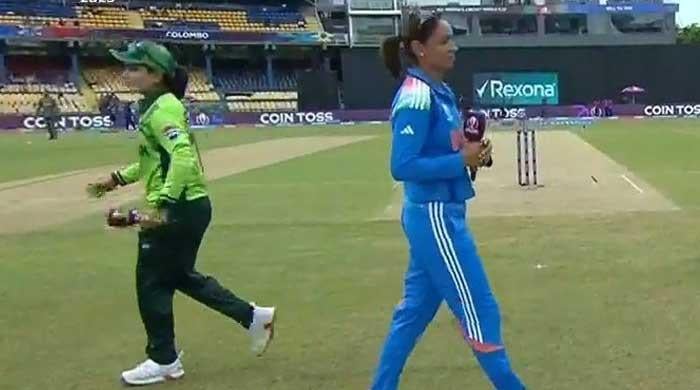In the often-predictable world of international cricket, some encounters still manage to surprise, not always with a boundary-filled thriller, but with peculiar incidents and unspoken tensions. This was precisely the backdrop against which the Indian and Pakistani women`s teams prepared for their World Cup clash in Sri Lanka, an event woven from threads of sporting dominance, geopolitical shadows, and a rather uninvited slithering guest.
An Unscripted Opening Act: The Premadasa Serpent
The R Premadasa Stadium, a venerable ground in Colombo, is known for its electric atmosphere. However, during a recent Indian women`s practice session, the only electricity was perhaps static, generated by an unexpected visitor: a common rat snake. Affectionately known as “Garandiya” by the locals, this non-venomous reptile decided to grace the outfield, adding a touch of the truly wild to a meticulously planned training drill. Far from inciting panic, the sight of the snake reportedly elicited amusement from players, support staff, and even the media contingent present. It seems that in the grand theatre of sport, even an uninvited, harmless serpent can offer a moment of lighthearted diversion.
One might even venture to suggest that this reptile, a creature of quiet persistence and ancient wisdom, inadvertently symbolized the nuanced nature of the upcoming match. For while the snake offered a momentary, innocent distraction, the true drama lay beneath the surface, coiled and ready to reveal itself not in a spectacular display of skill, but in a deeper, more complex narrative.
The Sporting Reality: A Rivalry in Name Only?
When the words “India vs. Pakistan” light up a cricket fixture, the mind typically conjures images of gladiatorial contests, roof-raising roars, and nail-biting finishes. This is largely a legacy forged in the men`s game, a rivalry steeped in history and an almost mythological significance. Yet, when the focus shifts to women`s cricket, the narrative undergoes a curious transformation.
Here, the term “rivalry” often feels like an earnest, yet slightly misplaced, aspiration. India`s women`s team has established a formidable dominance over their Pakistani counterparts. Statistics paint a clear picture: in One Day Internationals, India boasts an unblemished record against Pakistan. In the shorter T20 format, while Pakistan has managed a handful of victories, they remain a distinct minority. This isn`t a back-and-forth contest; it`s a testament to India`s consistent strength and strategic execution.
“Rivalries are forged through balance, through blows traded back and forth, through contests where either side can win. This match-up has been anything but that,” observed a commentator, succinctly capturing the essence of the on-field dynamic.
For India, these matches often serve as crucial waypoints in their World Cup campaigns – a testament to a journey with higher aspirations. For Pakistan, however, each encounter becomes a monumental quest, an attempt to rewrite a history that has, thus far, remained stubbornly one-sided. The hope for an upset lingers in the air, a whisper among fans, but the gulf in performance remains demonstrably wide.
Beyond the Boundary: Geopolitical Shadows and Silent Protocols
But cricket, particularly between these two nations, is rarely confined to the 22 yards. The pitches and stands often reflect the broader geopolitical climate, and this particular World Cup fixture was no exception. Recent incidents, such as the men`s Asia Cup trophy debacle where India reportedly declined to accept the trophy from the PCB chairman, cast a long, chilly shadow over sporting diplomacy.
Against a backdrop of worsening bilateral relations, marked by significant geopolitical tensions, the customary handshake – a universal symbol of sporting camaraderie and respect – has become a casualty. The Indian government`s stance, permitting matches only in multi-nation tournaments while bilateral cricket remains suspended, reinforces a colder protocol. Consequently, the women`s teams, much like their male counterparts, were unlikely to engage in the traditional post-match pleasantries. The silence of an unextended hand speaks volumes, often more powerfully than any heated exchange.
It`s a stark reminder that even within the confines of a sporting event, players are sometimes unwitting participants in a larger, more intricate dance of international relations. The focus shifts from merely winning or losing to navigating a landscape where every gesture, or lack thereof, carries symbolic weight. One might even perceive a wry irony in this situation: a cricket match, ostensibly about bat and ball, transformed into a stage for quiet diplomacy (or its absence), all while a harmless rat snake earlier provided a moment of unexpected, apolitical levity.
The Enduring Significance: More Than Just a Game
So, why do these matches continue to captivate attention, even when the on-field contest appears predictably one-sided and the off-field atmosphere is strained? The answer lies in the profound symbolic resonance these encounters hold for millions. For fans, it`s about national pride, an emotional connection that transcends the scoreline. For players, it`s an opportunity to perform on a high-stakes platform, to make a statement, and to chip away at historical narratives.
The India-Pakistan women`s cricket match at the World Cup wasn`t merely a game; it was a microcosm of complex interactions. It featured the charming unpredictability of nature with a curious serpent, the stark reality of sporting dominance, and the subtle yet potent influence of geopolitics. It reminded us that sometimes, the most compelling stories in sport aren`t just about runs and wickets, but about the layers of meaning, unspoken protocols, and the quiet dignity with which a game unfolds amidst a world that is anything but simple.

